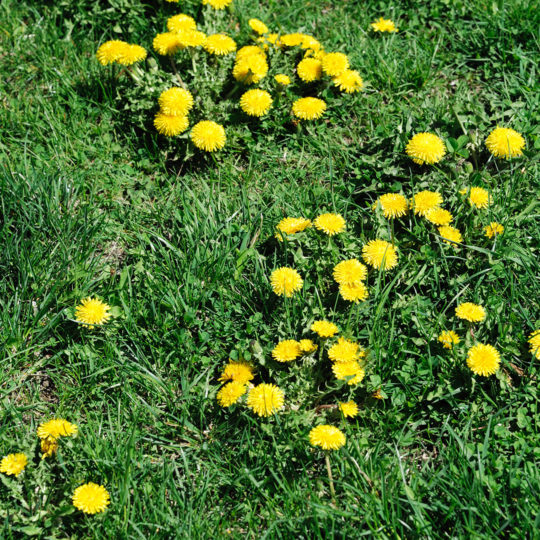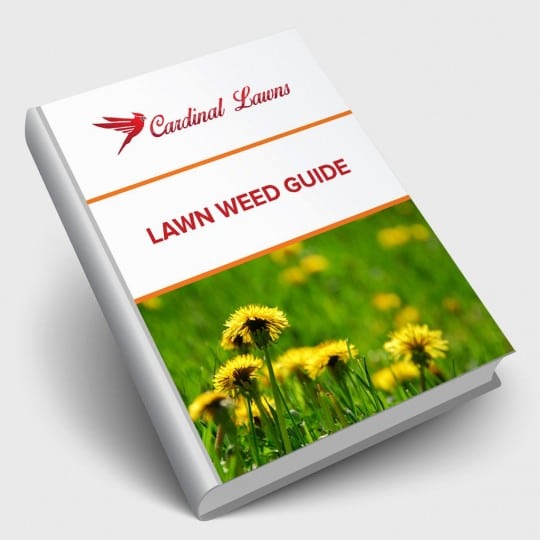Being Proactive about Weed Control
What to do Before, During & After a Sighting
Posted
April 13, 2023

They’re back. Weeds. Well, technically they never went away. They were just dormant like the other plants over the winter. Germinating seeds under the surface waiting for the weather to warm so they could POP. Unless…you used some of these proactive weed control tips to help prevent them from showing their weediness.
Proactive Weed Control Tips
Weed control is an ongoing process. Even if you’ve regularly maintained your lawn since last year and take every proactive precaution, weed seeds are always on the move. A gust of wind, a migrating bird, or neighbor’s footsteps can bring new weed seeds to your yard.
So should you just give up? Some homeowners do. In fact, many are embracing beneficial weeds such as dandelions and clovers to help with the pollinator population. However, if it’s a lush lawn with nothing but green you’re after, get ready to do some work every year.
It only takes a little preventative care to save yourself season-long stress. This comes in the form of pre-emergent herbicides. Some may apply these products in the fall to help stop overwintering weeds. But pre-emergents can also be applied early in the spring. These products are meant to prevent weeds from germinating. So, once you see a weed it’s already too late. Using a pre-emergent herbicide can lessen the chances of catching weeds in the spring and summer. However, one application may not be enough.
Once Weeds Emerge
Even if you’ve done your duty and applied a pre-emergent herbicide, you could still see signs of weeds springing up. There’s still time to be proactive about this type of weed control. The key is to evaluate the situation.
- Where did the weed appear? In the garden? Walkway? Grass?
- What’s the condition of the area? Is it a bare spot? Dead grass? Compacted soil?
- Have you had issues with this weed before?
Once you have an idea of why the weed may be there, you can proactively work to correct that problem; therefore, preventing the weed from coming back. If it’s filling in a bare spot of grass, seed that spot. If the area has compacted soil, aerate. No amount of weed control will be entirely effective if the root problem remains.
After you’ve addressed the underlying problem, if you still see signs of weeds, it’s time to tackle them with a post-emergent product. Either target the weed with a spot treatment or treat a larger area with the appropriate solution.
Targeting the Weeds
Not all weed control products are the same. Now we know about pre- and post-emergents, but there are also formulas that focus on grassy or broadleaf weeds. Identify the type of weed you’re trying to kill and choose the right product to do so. It’s that simple, especially since the product typically lists the types of weeds it targets right on the packaging.
Be careful to also note on the packaging whether the product will only target the weed (selective formula) or if it will kill anything it touches (non-selective)—including grass and desirable plants.
For those homeowners who would rather skip all the chemicals, there are more natural forms of weed control you can try in both the pre- and post-emergent stages. Ingredients like corn gluten meal have been known to help prior to germination, but the timing has to be just right. Vinegar and dish soap have been used in post-emergent solutions. Under the right conditions, you can also just burn the weeds you see. Obviously this requires more care especially in drought conditions.
If you don’t want to use any products of any kind and don’t mind getting your hands dirty, hand-pulling weeds is a tried-and-trusted method. There are also certain garden tools that help make this process easier. You can be proactive by pulling the weeds as you see them to help prevent more from germinating. When you do pull them out, just make sure to get the entire root so it doesn’t simply grow back.
Keep in mind that weed control is only as extensive as you want it to be. You can decide to embrace certain weeds for the beneficial properties or decide an immaculate green lawn is more desirable. Whatever you choose, take some time to enjoy it and it will seem like less work season after season.

Download Your FREE Lawn Weed Guide
Before weeds take over your yard this season, learn to identify and prevent them in the first place. Keep your lawn looking great all year!